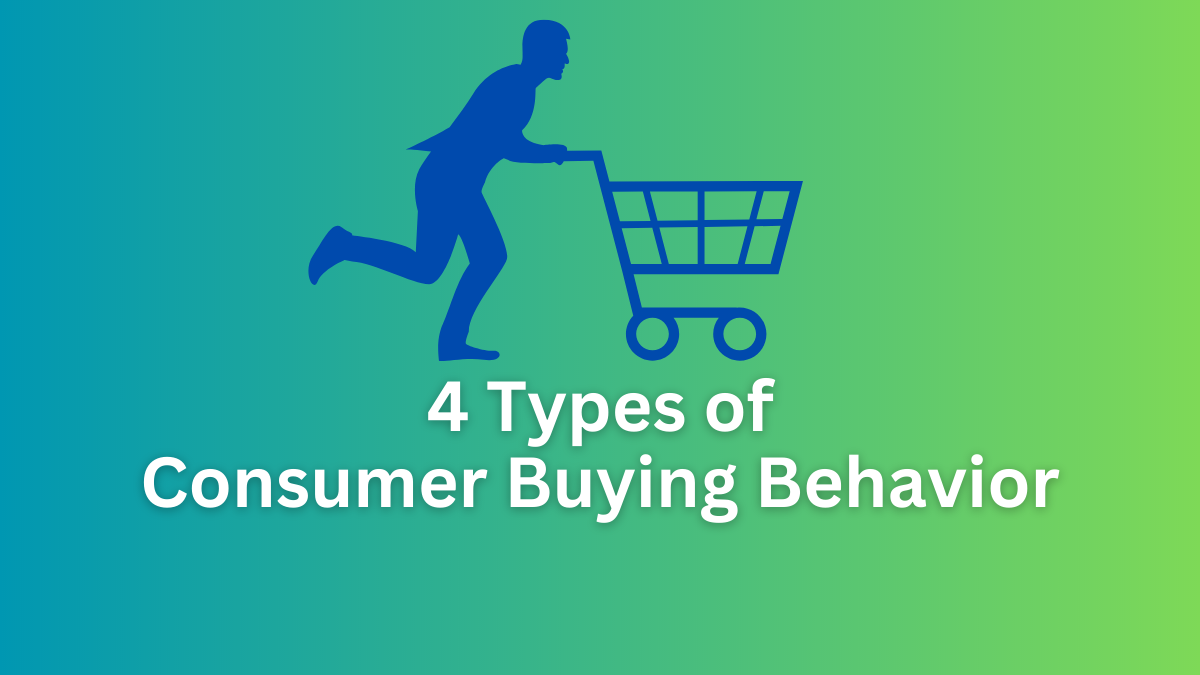Types of Consumer Buying Behavior
Simply consumer buying behavior refers to the behaviors shown by consumers while buying products. What behavior consumers will show depends on what types of products they are buying.
For instance, if consumers try to buy expensive products – they search for more information to know about the product’s pros and cons. On the other hand, if they are buying inexpensive products – they may buy without much effort.
In general, there are four types of consumer buying behavior, let’s understand each of them in detail.
Complex Buying Behavior
Complex Buying Behavior refers to a type of consumer behavior where people put a lot of effort into deciding on expensive or unfamiliar products. It’s like taking a long journey before making a purchase. Customers in this category are careful and thorough.
Importance of Understanding it – Understanding complex buying behavior is vital for businesses. These customers require detailed information and guidance. If companies don’t provide the right support, they might lose potential buyers. Getting it right can secure sales for high-value items.
Read More: Market Research – Definition
Examples – Imagine someone deciding to buy a luxury car. They’ll research, ask friends, and compare brands before making a choice. This behavior is common when the product’s price is high, and the buyer is unsure about it.
For businesses, recognizing complex buying behavior means they should have all the necessary information ready. Being able to answer questions and provide guidance can significantly influence a buyer’s decision.
In essence, complex buying behavior is like a well-thought-out journey for customers. Businesses need to guide them through it successfully to make the sale.
Dissonance Reducing Buying Behavior
Dissonance Reducing Buying Behavior is when a consumer feels conflicted or uneasy after making a purchase. They’re unsure if they made the right choice. This behavior is common when there aren’t many brand options to compare or when the chosen product is out of stock.
Read More: Types of Consumer Needs
Importance of Understanding it – Understanding dissonance reducing buying behavior is crucial for businesses. Customers who experience dissonance might return products or switch brands. Offering good post-purchase support and reassurance can prevent this and build loyalty.
Examples – Imagine buying a smartphone, and after the purchase, you begin to doubt if you chose the right model. This internal conflict is dissonance. It’s more likely to happen if there were limited options available or if the product was sold out elsewhere.
Businesses can address dissonance by providing excellent customer service, clear return policies, and reinforcing the value of the purchased product through follow-up emails or surveys. This helps customers feel confident in their choice.
At its core, dissonance-reducing buying behavior is like post-purchase anxiety. Understanding it can help businesses keep customers satisfied and loyal.
Variety Seeking Buying Behavior
Variety Seeking Buying Behavior is when consumers enjoy trying different brands or products out of curiosity, not because of price. They switch between brands easily and don’t show strong loyalty to any particular one. In this behavior, customers like experiencing product variety.
Read More: PESTLE Analysis – Definition
Importance of Understanding it – Understanding variety-seeking behavior is essential for businesses. It’s about knowing why some customers keep trying new things. By offering a range of products, discounts, and incentives, companies can attract these customers and keep them coming back.
Examples – Think of someone who enjoys buying different flavors of the same snack just for variety’s sake, even though they don’t mind the original flavor. Or imagine a person who buys clothes from various brands regularly because they like trying different styles.
Businesses can tap into this behavior by constantly updating their offerings, providing a variety of choices, and running promotions that entice customers to explore new products.
Variety-seeking buying behavior is like having a taste for adventure in shopping. Understanding it helps companies cater to customers who seek novelty in their purchases.
Read More: External Environment of Marketing – Definition,
Habitual Buying Behavior
Habitual Buying Behavior is the last one in our list of 4 types of buyer behavior. It is when consumers repeatedly purchase products they’re familiarized with without much consideration for price or quality.
These buyers are often loyal to a particular brand and don’t actively explore alternatives. The decision-making process is minimal and automatic.
Importance of Understanding it – Understanding habitual buying behavior is crucial for businesses looking to secure customer loyalty. When companies offer consistent quality, convenience, and accessibility, they can cultivate a loyal customer base. These buyers keep coming back without much persuasion, contributing to steady revenue.
Examples – Imagine someone who always buys a particular brand of toothpaste, not because it’s the cheapest or best-rated, but because it’s what they’ve always used. Or think of a person who consistently orders coffee from the same café every morning without considering alternatives.
Businesses can capitalize on this behavior by maintaining product consistency, offering incentives for repeat purchases, and nurturing brand loyalty through marketing and customer engagement.
Habitual buying behavior is akin to having a go-to choice, like a favorite restaurant. Understanding it helps companies retain loyal customers and build lasting relationships.
Read Next: Societal Marketing Concept – Definition
Arti Kushmi holds a BBS (Bachelor in Business Studies) degree and shares her business and marketing knowledge through this website. While not writing she will be reading and enjoying the moment.
